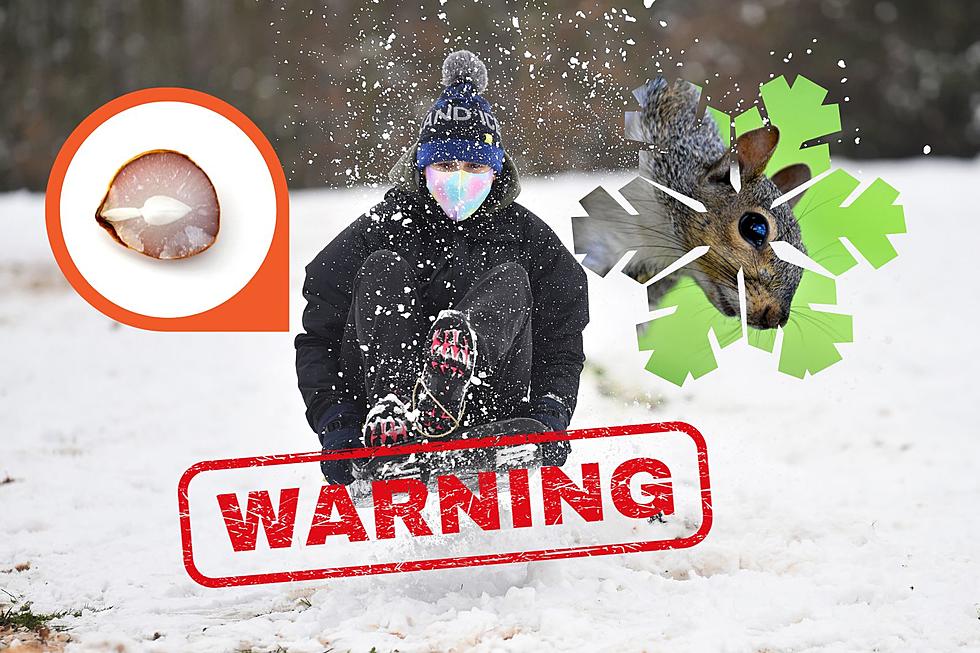
Absurd Map Aims to Answer How Much Snow It Takes to Cancel Classes
For those curious, yes, there is now a map displaying how much snow is required to force a school closing.
That map says any snow in the Ark-La-Tex (or possibly the threat of snow) will force schools to close in our region.
It also highlights different parts of the country and how much snow it would take to force a closure.
Some highlights:
- Los Angeles -- Any snow or threat of snow
- New York City -- 24 inches of snow
- Chicago -- 24 inches of snow
- Philadelphia -- 3 inches of snow
- My former homes: Suffolk County, NY (Long Island) -- 6 inches, Cheshire & Hillsborough Counties, NH -- 12 inches
Here is the Reddit user's logic:
- The lightest green says "any snow" but also includes merely the prediction of snow. Also, this is snow accumulation over 24 hours/overnight.
- In much of the Midwest and Great Plains, school closing often depends more on wind chill and temperature than on snow accumulation ("cold days"). Thus, this map may be misleading in those areas.
- Many jurisdictions in California and other western states have significantly varied snowfall, depending on elevation. This makes it difficult to find an "average" number, or often makes it misleading.
- Urban areas like Chicago and New York have more resources to clear snow and often need more to cause closings.
- To everyone saying "I grew up in so-and-so and we never closed school," policies have changed in the last 20 years to make closing a much more common occurrence. Just because schools stayed open back then doesn't mean they do these days.
- Hawaii does get snow! Just... not where people live.
- Data was taken from hundreds of various points from user responses and interpolated using NOAA's average annual snowfall days map. Any corrections/additions are welcome, just give a decently specific location.
While the idea is nice, it is totally absurd.
Having lived in places where it snows almost annually, this map is not a very accurate indicator of when there are snow days.
Discussion around this map on Reddit and even other articles talking about it fail to mention that schools don't just close because of a 'x' amount of snow. Schools close purely on the difficulty and hazard of transporting students to school, not just on how much snow falls on a community.
When I lived in New Hampshire, there were times where school would close because the city I lived in got 20 inches of snow. Sometimes, we'd only get four or five inches of snow. Other times, schools closed because there was so much ice on the roads and power lines making it too dangerous for buses to pick up students. There were other times when school was cancelled or delayed simply because of a chance of a certain amount of snow was expected, but never came.
The Atlantic story talking about this map mentioned that larger cities like New York are able to keep schools open with larger snow totals because of better equipment and infrastructure to remove the snow.
Villages and other smaller communities and compact school districts on Long Island in New York have fewer snow days partially because Long Island and New York City are not always barraged with snow, but also partially and more importantly, because compact school districts have fewer students who require busing. These smaller districts are less reliant on making sure roads are clear for buses, so it makes it easier to continue classes. The same can be said for New York City. If students can walk to school, classes continue.
While I applaud the effort in the research to find an "average" or "typical" snow total to close a school, it is not how much snow a school district gets that affects whether a districts stays open or closes, it is whether or not students can safely get to class and get home.
More From News Radio 710 KEEL


![Snow Blankets Most of North Louisiana to Start Weekend [VIDEO]](http://townsquare.media/site/34/files/2022/03/attachment-Screen-Shot-2022-03-12-at-12.26.37-PM.jpg?w=980&q=75)






